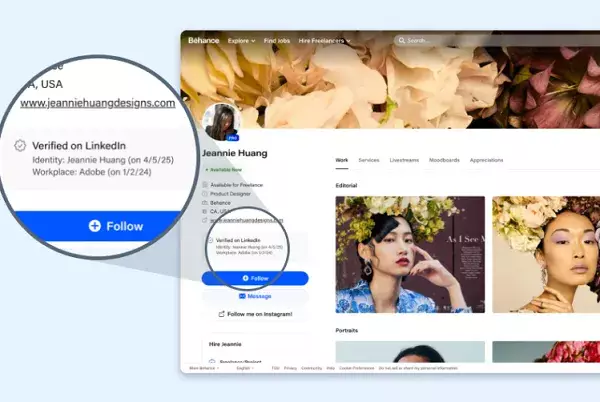LinkedIn’s recent decision to allow third-party platforms access to its ID verification markers symbolizes a pivotal shift in fostering authenticity within professional networks. Originally unveiled in 2023, the free ID confirmation system on LinkedIn, which utilizes third-party providers to authenticate user identities, is a welcome advancement in combating faux profiles and enhancing professional credibility. This development elevates the platform’s commitment to genuine interactions, enabling users to communicate and collaborate more securely and confidently.
With an impressive 80 million members already having gone through the voluntary ID verification process, LinkedIn is not merely enhancing user experience but is also redefining what it means to be credible in the professional sphere. The initiative’s integration into other apps—like Adobe’s Content Authenticity app and Behance—illustrates a forward-thinking approach to user identity, expanding beyond the confines of LinkedIn itself. The “Verified on LinkedIn” badge that creators will display in their profiles fosters an atmosphere of trust that is increasingly rare in the digital age where impersonation and bots proliferate.
A Partnership of Trust
The collaboration between LinkedIn and Adobe removes the burden on Adobe to create its own verification mechanism, resulting in a synergy that benefits both platforms. By embedding LinkedIn’s verification into its existing services, Adobe not only streamlines its verification process but also enriches the overall experience for its users. This partnership implies that companies can lean on larger platforms for trust indicators rather than starting from scratch, which can be both time-consuming and costly.
Moreover, this collaboration could transform the creator economy by presenting verified identities alongside their work, enhancing the perceived value of services provided. Identity verification may serve as an invaluable tool for content creators as it bridges the gap between their virtual output and their real-world identities, allowing audiences to engage with their work on a deeper level. The implications of this could shift the way creators are viewed and valued, fostering a culture built on verified relationships.
Challenges of Anonymity vs. Accountability
Nevertheless, while the concept of universal verification garners considerable support, it stirs discussions around the balance between accountability and anonymity. Many users value the level of privacy that anonymity provides, fearing the potential repercussions of exposing their identities in a digital landscape that can be decidedly unforgiving. Previous attempts to enforce user ID requirements on social media have faltered amid concerns over privacy and censorship.
However, LinkedIn’s approach provides an alternative pathway that could serve both camps. By utilizing third-party verification, the platform allows users to opt into authenticity without entirely sacrificing their privacy. This delicate balance may become a model for future social interactions online.
Implications for Future Regulations
The effectiveness of LinkedIn’s ID verification and the partnership with Adobe may serve as a litmus test for wider regulatory practices in the industry. If this model proves beneficial in combating spam, bots, and misinformation, it may stimulate a broader movement towards mandatory third-party verification across various platforms. Regulators may contend that such systems could enhance user accountability, particularly in spaces that influence public opinion and professional interactions.
While legislation surrounding universal ID verification may face resistance, successful implementations in targeted environments like LinkedIn may pave the way for acceptance and adaptation of such standards. This opens a dialogue about what it means to be “real” in the digital age, challenging users and regulators alike to consider innovative solutions for establishing trustworthiness online.
Enhanced Control Over Digital Ownership
In addition to ID verification, LinkedIn’s alignment with Adobe’s “Content Credentials” aims to tackle another critical element in the creator landscape: ownership of digital content. By embedding metadata that claims ownership, creators can further assert their rights, enhancing not just trust but also their control over intellectual property in the fast-evolving content marketplace.
As artificial intelligence becomes increasingly adept at creating hyper-realistic fake content, methods of assured ownership and verification are likely to become paramount. This proactive step by LinkedIn to blend identity verification with digital ownership is a forward-looking strategy that could redefine ownership dynamics while fortifying the complex relationships in professional settings.
Through these initiatives, LinkedIn is not only reinforcing its position as a leader in professional networking but also takes significant strides toward creating a more trustworthy environment for all its users. The confluence of verified identities and ownership rights could lay the groundwork for a more accountable and authentic interaction in the expansive digital world.


Leave a Reply